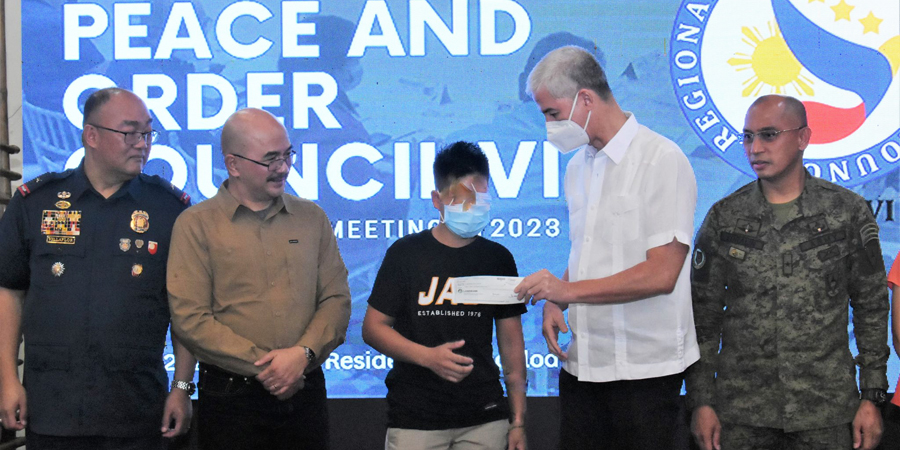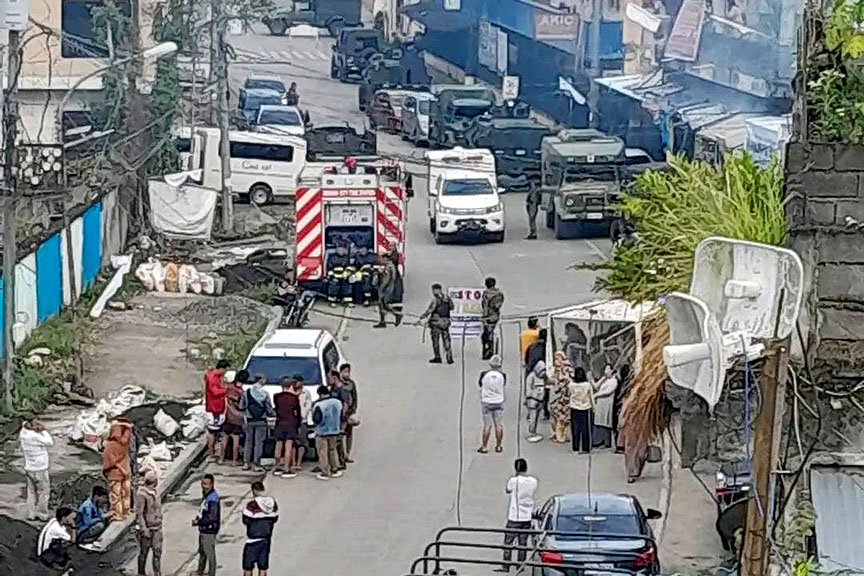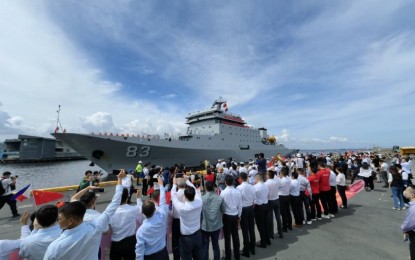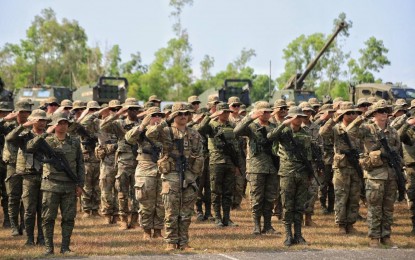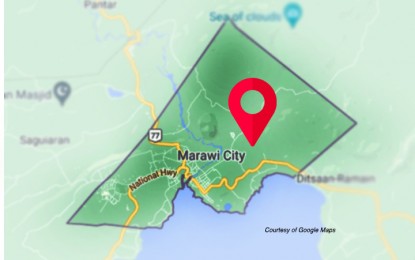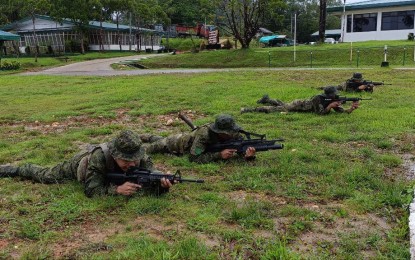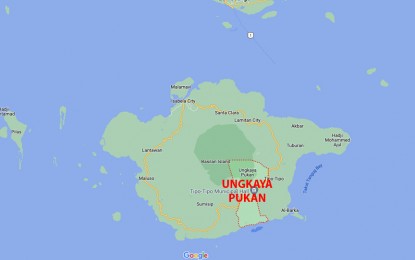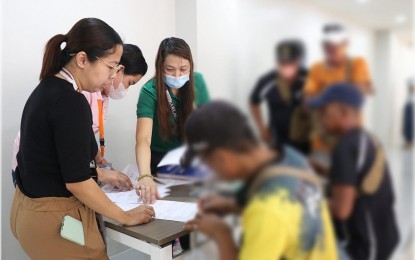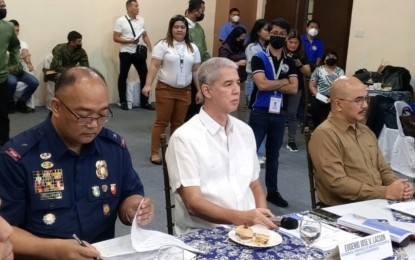Posted to the Foreign Policy Research Institute (FPRI) Website (Jun 14, 2023): US-Philippines Enhanced Defense Cooperation Agreement Revived (By Felix K. Chang)
BOTTOM LINE- In February 2023, the Philippines and the United States revived their Enhanced Defense Cooperation Agreement (ECDA). Though signed in 2014, legal and political challenges in the Philippines put the full implementation of the agreement in doubt.
- Under the ECDA, the United States has secured access to a total of nine Philippine military bases, including four additional ones that were identified in April 2023. The proximity of most of the bases to Taiwan and the South China Sea makes them valuable for military contingencies in the region, and the boost in the number of bases that America’s military can access supports its broader plans to disperse its forces more widely across the Indo-Pacific region.
- The revival of the agreement represents a renewed commitment by the Philippines and the United States to each other’s interests and to strengthening deterrence in Southeast Asia.
The signatories of the EDCA hoped that it would herald a more collaborative era in Philippine-American defense relations. As it turned out, that era would have to wait almost a decade. The EDCA immediately ran into a constitutional challenge and ultimately Rodrigo Duterte, who followed Aquino as president and seemed intent on shelving the pact. By 2021, the EDCA appeared nearly dead. But two years later, Duterte’s successor, Ferdinand Marcos, Jr., has breathed new life into the agreement.
Leveraging the EDCA, Marcos brought Manila and Washington closer together than they have been in a generation. Possibly the most notable aspect of the two countries’ rekindled closeness was the access that the Philippines gave the United States to nine of its military bases, including four that were added in 2023. The locations and types of additional bases reflect the sorts of contingencies that concern Manila and Washington today. Together with their issuance of updated bilateral defense guidelines in May 2023, the EDCA’s revival represents a renewed commitment by the Philippines and the United States to each other’s interests and to strengthening deterrence in Southeast Asia.
Getting to the First Base
The origin of the EDCA began soon after a months-long standoff between hundreds of Chinese and Philippine vessels near the disputed Scarborough Shoal in 2012. Though the standoff ended with China in control of the shoal, it also forced Manila and Washington to rethink how to deal with China’s behavior. The EDCA was created to help boost America’s military presence in the area. Under the pact, the two countries began joint maritime patrols in the South China Sea. They also planned for the United States to rotate its troops through five Philippine military bases, improve their facilities, and preposition military hardware at them. These were: Benito Ebuen Air Base in Cebu, Lumbia Airfield in Cagayan De Oro, Fort Magsaysay Military Reservation in Nueva Ecija, Cesar Basa Air Base in Pampanga, and Antonio Bautista Air Base in Palawan.
However, full implementation of the EDCA was quickly blocked. Even before the ink was dry on the pact, its opponents, including two former Philippine senators who had voted to remove American bases from the Philippines in 1991, questioned its constitutionality. They argued that the EDCA was not merely an extension of the 1951 US-Philippines Mutual Defense Treaty, but rather a new treaty that required a separate Philippine Senate ratification. Unfortunately for Aquino, by the time the Philippines Supreme Court ruled that that was not the case, his term had ended.
When Duterte entered office in 2016, he took a decidedly different tack. He sought to “separate” the Philippines from the United States. He suspended the joint maritime patrols and repeatedly threatened to terminate the Visiting Forces Agreement (VFA) between Manila and Washington that enables American troops to rotate through the bases under the EDCA. Duterte created a further furor in 2017 when he claimed that Washington would use the EDCA to store nuclear weapons at Philippine bases. And while the two sides eventually settled the VFA in 2021, Duterte’s administration continued to make Washington uneasy, raising the possibility that the Philippines’ mutual defense treaty with the United States needed a comprehensive review.
Only after Marcos was sworn in did relations between the Philippines and the United States begin to heal. In 2023, the two countries held their largest-ever annual Balikatan military exercise in terms of personnel involved. He also resumed joint maritime patrols in the South China Sea. But perhaps the best indication of closer ties between the two countries was Manila’s willingness to include a second group of four Philippine military bases to the initial group of five under the EDCA in February 2023. Two months later, the additional bases were identified as: Lal-lo Airport in Cagayan, Naval Base Camilo Osias in Cagayan, Camp Melchor Dela Cruz in Isabela, and Balabac Island in Palawan.
Continued Importance of Bases
While technological advances may have diminished the significance of many military bases, they remain important for the United States on Asia’s periphery, given the vast distance across the Pacific Ocean. Nearby bases allow forces to return to action faster and remain on station longer. But after the Cold War, the number of American bases in the Western Pacific declined, and with it the forward presence of American forces. So much so that America’s allies began to question Washington’s commitment to them, especially considering China’s growing military strength. Though President Barack Obama made much of his “pivot to Asia” in the early 2010s, it did little to alter the strategic posture of the United States (or its bases) in the region.
Combined with Manila’s failure to invest in its external defense forces (namely its navy and air force) until the mid-2010s, the seemingly reduced American commitment to Philippine security appeared to have eroded whatever restraint that Beijing may have felt about pressing its South China Sea claims at Manila’s expense. In 1995, China seized Philippine-claimed Mischief Reef in the disputed Spratly Islands and, since then, has intimidated Philippine vessels with increasing frequency. Against that backdrop, it seems likely that Marcos revived the EDCA to signal to Beijing not only Manila’s displeasure, but also its shift towards a posture of greater deterrence.
Base Contingencies
For most of the Cold War, the United States was well prepared for any contingency in the airspace and waters of the South China Sea. That was largely due to its two huge military bases in the Philippines, Clark Air Base and Naval Base Subic Bay. Until they closed in 1991, the bases could support over a hundred combat aircraft and a score of warships at any given time. The nine Philippine bases that the United States has secured access to under the EDCA are not in the same league. Though far less capable than facilities used in the Cold War, the proximity of the bases—particularly the latest additions—to Taiwan and the South China Sea is what makes them valuable.
Certainly, the difference in locations between the first and second groups of bases under the EDCA shows the shift in strategic thinking of Manila and Washington towards a focus on deterrence. The locations of the first group of bases had suggested multiple aims. Of the five bases envisioned in 2014, only two—Antonio Bautista Air Base and Cesar Basa Air Base—can be considered reasonably close to potential international conflict areas. The rest are scattered across the central and southern Philippines, better situated for counterinsurgency and humanitarian assistance and disaster relief missions.
That stands in contrast to the locations of the second group of bases. All four are located near potential international conflict areas. Three are in the northern Philippines near Taiwan. Lal-lo Airport and Naval Base Camilo Osias are less than 400 km from the Bashi Channel—a strategic waterway that China would likely have to control to seize Taiwan and, conversely, the United States would have to control to aid the island. Lal-lo Airport could be used by short-range fighter jets to rearm and refuel or simply as an alternate airfield, and Naval Base Camilo Osias could be used by warships to make basic repairs or as a port for transshipment of relief supplies bound for Taiwan. And although Camp Melchor F. Dela Cruz might seem like an outlier, it is home to the Philippine Army’s 5th Infantry Division, which is responsible for land-based air defense in northern Luzon, as well as a hospital that could prove handy should a contingency turn hot.
The fourth base, Balabac Island, is strategically positioned near the South China Sea, just 330 km from the center of the disputed Spratly Islands. The island also dominates the passage into the Sulu Sea. Interestingly, the United States reportedly requested access to a fifth military base in Zambales, the Philippine province closest to Scarborough Shoal. While it is unknown why the request was denied, it again hinted at Washington’s focus. Whatever the case, the boost in the number of bases that America’s military can access supports its broader plans to disperse its forces more widely across the Indo-Pacific region.
All of this reflects a greater unity of purpose between Manila and Washington—one singularly focused on deterrence, rather than counterinsurgency or disaster relief. Though the new bases will not be as capable as America’s once-formidable bases in the Philippines, a greater number of smaller bases may be preferable to a fewer number of bigger ones, which China can more easily target. Ultimately, the new bases are likely to enable the United States to respond (and maintain its response) to contingencies near Taiwan or the South China Sea more effectively than it can today.
Beyond Bases
None of that should imply that Marcos or other Philippine politicians have given up on stronger ties with China. Indeed, during his January 2023 visit to Beijing, Marcos focused on ensuring continued Chinese investment in the Philippines. Later, he assured Beijing that the bases under the EDCA would not be used for “offensive action” in the region, a point that his secretary of foreign affairs, Enrique Manalo, emphasized to the Philippine Senate. Manalo noted that the EDCA’s parameters had not changed. Manila would not permit activities under the agreement that were inconsistent with the intent of what was negotiated in 2014.
Even so, Marcos’ administration does appear to have lost faith in diplomacy alone to change China’s aggressive behavior in the region. In fact, only a month after his visit to Beijing, the Chinese coast guard used a “military-grade laser” to target a Philippine coast guard ship. With tensions already running high between China and the United States over Taiwan, Marcos seemed to acknowledge that his country was unlikely to be able to forever remain above the fray, saying that “It’s very hard to imagine a scenario where the Philippines will not somehow get involved” if a conflict was to erupt.
Yet for the Philippine military bases under the EDCA to serve as an effective deterrent, more needs to be done. Proximity to potential conflict areas swings both ways. Shorter distances offer American forces the ability to return to action faster and remain on station longer. But they also make the bases vulnerable to attack. Thus, it would be wise for Manila and Washington to think about how to protect them from ballistic missiles, cruise missiles, strike aircraft, and unmanned aerial vehicles. Dispersed fuel and munitions storage, hardened shelters, and repair kits for airfields and other infrastructure would be a start. Missile defenses would help even more. Perhaps it was no coincidence that the United States conducted a live-fire demonstration of its MIM-104 Patriot air defense systems in the Philippines for the first time during the 2023 Balikatan exercise.
If properly built up and protected, the bases under the EDCA would bring Manila closer to its decade-long goal of achieving “minimum credible deterrence.” Along with the updated defense guidelines between the Philippines and the United States, the EDCA’s revival shows that the security relationship between the two allies is on the mend. And, while the EDCA might not entirely stop Beijing from pressing its South China Sea claims, the pact could deflect some of China’s energies elsewhere. That would be a relief for the Philippines, though Vietnam and Malaysia might want to take care.
The views expressed in this article are those of the author alone and do not necessarily reflect the position of the Foreign Policy Research Institute, a non-partisan organization that seeks to publish well-argued, policy-oriented articles on American foreign policy and national security priorities.
https://www.fpri.org/article/2023/06/us-philippines-enhanced-defense-cooperation-agreement-revived/














